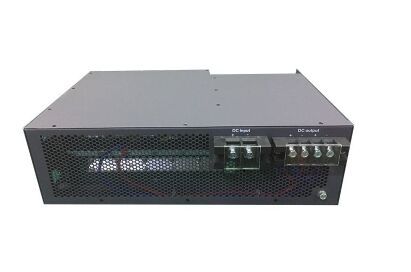24v to 12v converter 50 amp: 24v to 12v converter 30 amp
24VAC/DC to 12VDC power conversion products use professional switching power conversion chips to convert 24V AC or DC signals into 12V DC voltages, providing continuous current output from 500mA to 2.2A, and DC 24V can output efficiency up to 83% at 5A To 91%.
The 24v to 12v converter has input overvoltage, output short circuit, surge, and lightning protection circuits, and is very suitable for applications that convert 24 AC voltage into DC 12V in closed-circuit television wiring projects.
Most DC-DC converters are designed for unidirectional conversion, and power can only flow from the input side to the output side. However, the topology of all switching voltage converters can be changed to bidirectional conversion, allowing power to flow from the output side back to the input side by changing all the diodes to independently controlled active rectification. Two-way converters can be used in applications such as vehicles that require regenerative braking. When the vehicle is running, the converter supplies power to the wheels, but when braking, the wheels will in turn supply power to the converter.
Switching converters are actually more complicated from an electronics point of view, but because many circuits are packaged in integrated circuits, they require fewer parts. In the circuit design, in order to reduce the switching noise to the allowable range, and to make the high-frequency circuit operate stably, it is necessary to carefully design the circuit and the actual circuit and component layout. In a step-down application, the cost of switching converters is higher than that of linear converters, but with the advancement of chip design, the cost of switching converters is gradually decreasing.
1. Function classification: Boost converter: a voltage converter that transforms a lower voltage (range or fixed value) into another higher voltage (variable or fixed value), such as input 12V (input voltage range: 10V- 15V) output 48V after conversion; step-down converter: a voltage converter that converts a higher voltage (range or fixed value) to another lower voltage (variable or fixed value), such as input 48V (input voltage range): 40V-60V) output 12V after conversion; buck-boost converter: a voltage converter that can convert a voltage (range or fixed value) into a lower or higher voltage (variable or fixed value) at the same time, such as input 48V (input voltage range: 40V-60V) can output 12V or 72V after conversion;

24V to 12V 50A converter: 24v to 12v converter 50 amp
2. Isolation performance classification: non-isolated converter: there is a DC path between input and output, input and output share the same ground, simple structure, low cost, high efficiency, and poor safety performance; isolated converter: electrical isolation between input and output, Eliminate the DC path, input and output do not share the ground, the structure is complex, the cost is high, the efficiency is lower than the non-isolation, and the reliability is high;
3. Classification of control requirements: PWM control converter: high efficiency and good output voltage ripple and noise; PFM control converter: even if used for a long time, especially when the load is small, it has the advantage of low power consumption; PWM/PFM Control type converter: PFM control is implemented when the load is small, and it is automatically switched to PWM control when the load is heavy;
4. Classification of output requirements: Single output converter: The converted output voltage and current are only a set of fixed values; multiple-output converter: The converted output voltage and current can be multiple sets of different values.